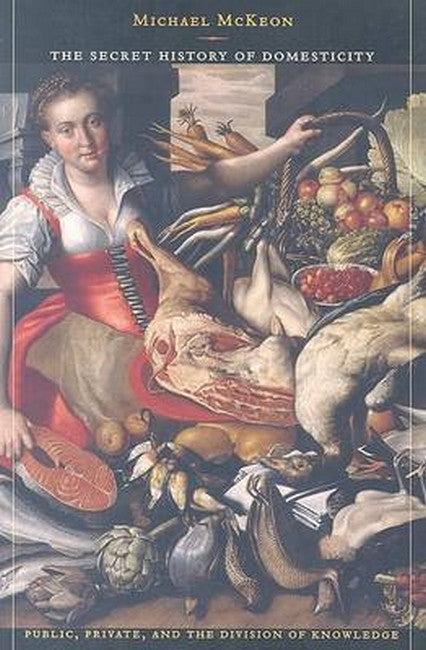List of IllustrationsAcknowledgmentsIntroductionThe Division of KnowledgeThe Public and the PrivateDomesticityForm and Spatial RepresentabilityQuestions of MethodPart I: The Age of Separations1. The Devolution of AbsolutismState and Civil SocietyFrom Tacit to ExplicitPolis and OikosThe State and the FamilyAbsolute Private PropertyInterest and the Public InterestCivic Humanism or Capitalist Ideology?From the Marketplace to the MarketThe Protestant SeparationConscientious Privacy and the Closet of DevotionWhat Is the Public Sphere?2. Publishing the PrivateThe Plasticity of PrintScribal PublicationPrint, Property, and the Public InterestPrint Legislation and CopyrightKnowledge and SecrecyPublic OpinionWhat Was the Public Sphere?Publicness through VirtualityPublication and PersonalityAnonymity and ResponsibilityLibel versus SatireCharacters, Authors, ReadersParticulars and GeneralsActual and Concrete Particularity3. From State as Family to Family as StateState as FamilyFamily as StateComing TogetherBeing TogetherPutting AsunderTory Feminism and the Devolution of AbsolutismPrivacy and Pastoral4. Outside and Inside WorkThe Domestic Economy and Cottage IndustryThe Economic Basis of Separate SpheresHousewife as GovernorThe Whore's LaborThe Whores Rhetorick5. Subdividing Inside SpacesSeparating Out ""Science""The Royal HouseholdCabinet and ClosetSecrets and the SecretaryNoble and Gentle HouseholdsThe Curtain LectureHouseholds of the Middling SortWhere the Poor Should Live6. Sex and Book SexSexAristotle's Master-pieceOnaniaBook SexProtopornography: Sex and ReligionProtopornography: Sex and PoliticsThe Law of Obscene LibelPart II: Domestication as Form7. Motives for DomesticationThe Productivity of the Division of KnowledgeDomestication as HermeneuticsDomestication as PedagogyDisembedding Epistemology from Social StatusScientific DisinterestednessCivic DisinterestednessAesthetic Disinterestedness8. Mixed GenresTragicomedyRomanceMock EpicPastoralChrist in the House of Martha and Mary9. Figures of DomesticationNarrative ConcentrationNarrative ConcretizationPart III: Secret Histories10. The Narration of Public CrisisWhat Is a Secret History?Sidney and BarclayOpening the King's CabinetOpening the Queen's ClosetScudéryWomen and RomanceThe King Out of PowerThe King in PowerThe Secret of the Black BoxThe Secret of The Holy War11. Behn's Love-LettersLove versus War?Love versus FriendshipFathers versus ChildrenEffeminacy and the Public WifeGender without SexFrom Epistolary to Third PersonFrom Female Duplicity to Female InteriorityLove-Letters and Pornography12. Toward the Narration of Private LifeThe Secret of the Warming PanThe Private Lives of William, Mary, and AnneThe Privatization of the Secret HistoryThe Strange Case of Beau Wilson13. Secret History as AutobiographyPreface on CongreveManley's New AtalantisManley's RivellaPostscript on Pope14. Secret History as NovelDefoe and SwiftJane Barker and Mary HearneHaywood's Secret HistoriesRichardson's Pamela15. Variations on the Domestic NovelFanny HillTristram ShandyHumphry ClinkerPride and PrejudiceNotesIndex

